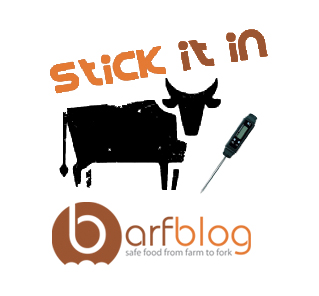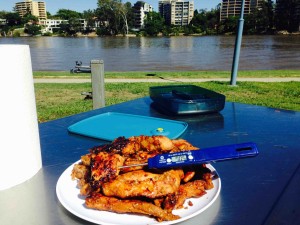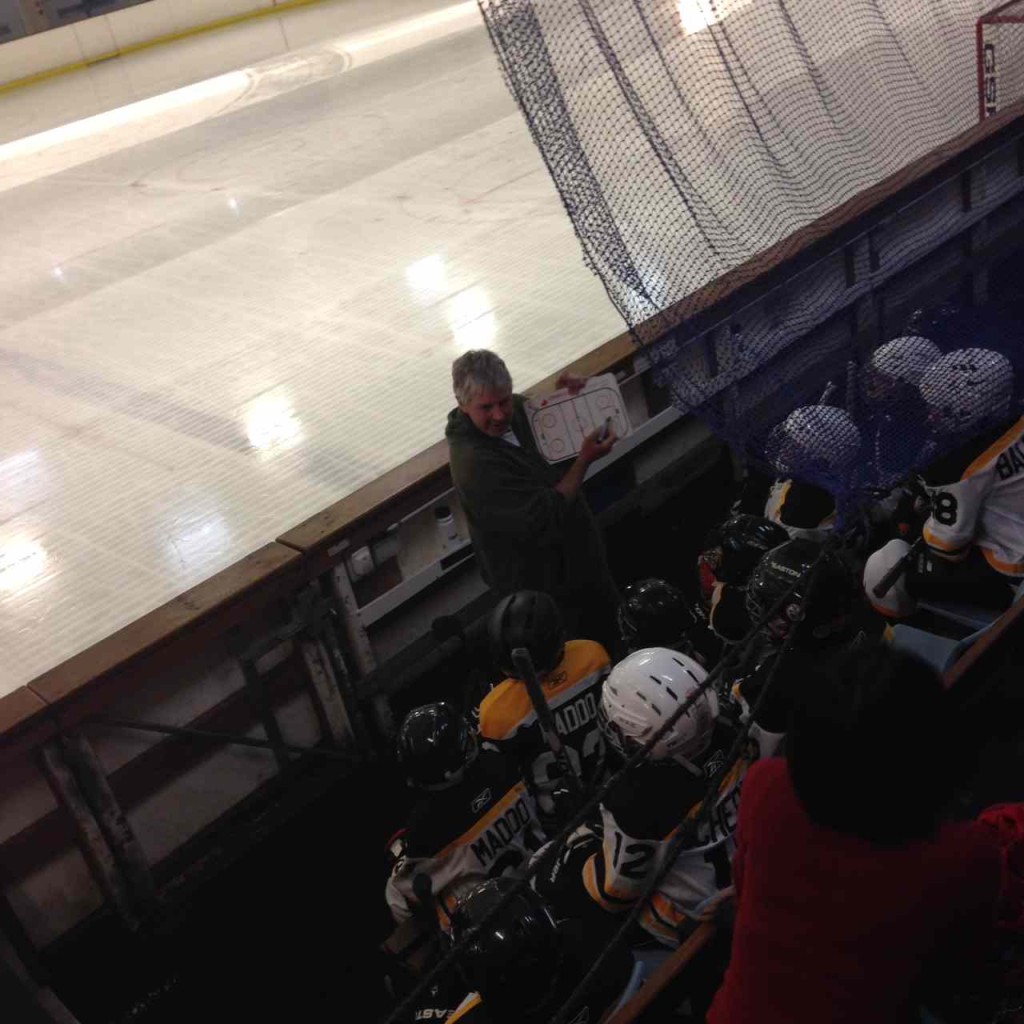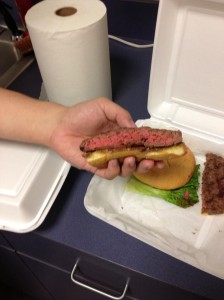My first column from the Texas A&M Center for Food Safety:
I dream about thermometers.
In the latest combination of fact and fiction, accuracy and amalgamation, I was at a roadhouse-style restaurant and settling the bill with an  assistant manger who had seen it all and stopped having fun years ago, when smoke started billowing from the open grill.
assistant manger who had seen it all and stopped having fun years ago, when smoke started billowing from the open grill.
A waitress tried to serve the burger — black on the outside, raw on the inside – when my food safety nerd friend went to intervene.
I joined the fray, and insisted a thermometer was necessary to determine if the burger was safe.
The assistant manager said, “I heard you were the biggest loser in town.”
Then the dream ends.
In 1998, the U.S. Department of Agriculture very publicly began to urge consumers to use an accurate food thermometer when cooking ground beef patties because research demonstrated that the color of meat is not a reliable indicator of safety.
USDA Under Secretary for Food Safety at the time, Catherine Woteki, said, “Consumers need to know that the only way to be sure a ground beef patty is cooked to a high enough temperature to destroy any harmful bacteria that may be present is to use a thermometer.”
At the time, I said, no one uses a meat thermometer to check the doneness of hamburgers. The idea of picking up a hamburger patty with tongs and inserting the thermometer in sideways was too much effort (others insist the best way to use a tip sensitive digital thermometer is to insert into the middle of the patty at a 45 degree angle).
I was wrong.
Shortly thereafter, I started doing it and discovered, not only was using a meat thermometer fairly easy, it made me a better cook. No more extra  well-done burgers to ensure the bugs that would make me sick were gone. They tasted better.
well-done burgers to ensure the bugs that would make me sick were gone. They tasted better.
By May 2000, USDA launched a national consumer campaign to promote the use of food thermometers in the home. The campaign featured an infantile mascot called Thermy that proclaimed, “It’s Safe to Bite When the Temperature is Right.”
Fourteen years later, the converts are minimal. Canada came to the thermometer table a few years ago, but the laws of physics are apparently different north of the 49th parallel, with a safe temperature for poultry being 180F in Canada, but 165F in the U.S.
The Aussies are slowly warming to the idea of thermometers but the UK is still firmly committed to piping hot (cue Dick van Dyke in Mary Poppins).
Science-based depends on whose science is being quoted to whose ends. The fancy folks call it value judgments in risk assessments; Kevin Spacey in the TV series House of Cards would call it personal advancement.
Food safety is losing to food porn with thermometers.
Many celebrity chefs actively denigrate the use of a thermometer when cooking. Some claim to know meat is safe using the finger method, which is akin to a shaman curing a sick child, or dowsing to find water (chance figures heavily –even a blind squirrel finds a nut once in a while).
Gordon Ramsey says, “A thermometer? The day we need that to cook a breast of chicken — you, get out.”
Seamus Mullen, the chef and an owner of the Boqueria restaurants in the Flatiron district and SoHo in New York City uses a wire cake tester, or any thin, straight piece of metal.
“We stick it in the middle through the side. If it’s barely warm to the lips, it’s rare. If it’s like bath water, it’s medium rare. The temperature will never lie. It takes the guesswork out of everything.”
Why not stick in a thermometer — a thin piece of metal?
I can no longer cook without a meat thermometer; I feel naked, like in a dream.
Yet almost everyone else in the U.S. can, where only 7 per cent of the population report using a thermometer on a regular basis — and some of those are surely lying.
We’ve known the basics for increasing thermometer use for over a decade: people care more about being better cooks than serving safe food, and lead by example.
Tip-sensitive digital thermometers need to be widely available, and food safety types need to use them properly. Not just at home, but at school events with the kids, at potlucks, at any gathering that involves food.
Stop dreaming, start doing.
Dr. Douglas Powell is a former professor of food safety who shops, cooks and ferments from his home in Brisbane, Australia.
 The measures, which have been in place for the majority of M&S chickens sold since the end of September, include even clearer front-of-pack labelling and double bagging whole chickens so they can be placed straight into the oven without the need to unwrap and handle the chicken. Action is also underway on M&S farms with bonuses paid to farmers who produce Campylobacter free farms and innovative new safety technology in place on the production line.
The measures, which have been in place for the majority of M&S chickens sold since the end of September, include even clearer front-of-pack labelling and double bagging whole chickens so they can be placed straight into the oven without the need to unwrap and handle the chicken. Action is also underway on M&S farms with bonuses paid to farmers who produce Campylobacter free farms and innovative new safety technology in place on the production line.








